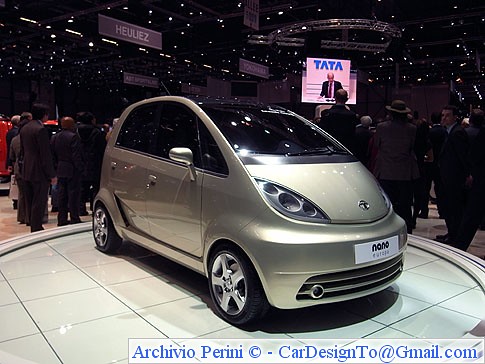Bernie’s Transportation Communications Newsletter (TCN) – June 8, 2009
Monday, June 8, 2009 – ISSN 1529-1057
Siemens and Sensys Networks Partner to Simplify Data Collection in Adaptive Traffic Management Systems
Siemens Traffic Solutions and Sensys Networks have formed a technology partnership to integrate Sensys wireless vehicle detectors with the Siemens SCOOT® Adaptive Control System. The collaboration of Siemens and Sensys has unleashed the ability for cities and municipalities to implement SCOOT® Adaptive systems without the infrastructure and cost barriers of traditional loop detectors. Sensys wireless detectors are renowned for their ease of installation and dependability. Integration with Siemens products further facilitates their use by making it easier to implement at all levels of traffic management systems and for a variety of applications. Siemens plans further integration with additional systems beyond adaptive control. Working closely with Sensys, Siemens expects to see integration with regional, central and on-street systems. For more info on how you can simplify your SCOOT® Adaptive Control System with Sensys wireless detectors and eliminate street trenching all together, email Ray Schreiber at ray@sensysnetworks.com or call 510 898 2251. Visit us at www.sensysnetworks.com for more info.
AVIATION
1) Paris-Miami Flight a Step Forward for Aviation
An intercontinental flight from Paris to South Florida by a US passenger jet will use new fuel-saving and satellite-based navigation procedures.
Link to story in The Miami Herald:
http://www.miamiherald.com/news/southflorida/story/1086729.html
2) Airlines Expanding Self-Serve Check-In
Many passengers can now check in for a flight and even change or select a seat using their mobile phones.
Link to story in the Los Angeles Times:
http://www.latimes.com/business/la-fi-briefcase6-2009jun06,0,4717445.story
3) Air France Replaces Speed Sensors
Link to BBC News story:
http://news.bbc.co.uk/2/hi/americas/8087573.stm
4) E-Boarding Pass Use Expands; Baggage Carousel Ads Make the Rounds
Link to story in USA Today:
http://www.usatoday.com/money/industries/travel/2009-06-07-airport-checkin-delta-american_N.htm
BICYCLES
5) Baffled About Pedaling to Work? Web Will Get You Rolling
Link to story in the Chicago Sun-Times:
http://www.suntimes.com/news/transportation/1611705,CST-NWS-ride08a.article
GPS / NAVIGATION
6) TomTom Brings Turn-by-Turn Navigation to iPhone
Link to CNET News story:
http://reviews.cnet.com/8301-19512_7-10259662-233.html
MARITIME
7) Stimulus Funds for Coastal Charts Yet to be Sighted
Link to story in The Baltimore Sun:
http://www.baltimoresun.com/news/local/bal-te.md.mapping06jun06,0,3316044.story
OTHER
8) Human Ear Inspires Universal Radio Antenna
It may lead to electronics that can pick up any radio frequency.
Link to story from Discovery:
http://www.msnbc.msn.com/id/31172567/
RAILROADS
9) Amtrak Late to Station with Onboard Wi-Fi
Link to commentary on Reason Online:
http://reason.com/blog/show/133989.html
ROADWAYS
10) Ohio Turnpike to Let Drivers Pay Tolls with Credit, Debit Cards
Link to story in The Plain Dealer:
http://blog.cleveland.com/metro/2009/06/ohio_turnpike_to_let_drivers_p.html
11) Can Twitter Help Fix San Francisco’s Potholes?
Link to story in The Christian Science Monitor:
http://www.csmonitor.com/2009/0606/p02s01-usgn.html
12) ShakeCast: Caltrans Deploys a Tool for Rapid Postearthquake Response
Link to further information from the Transportation Research Board:
http://www.trb.org/news/blurb_detail.asp?id=10437
SAFETY / SECURITY
13) MBTA Expands Cell Phone Ban to Rail, Boats
Link to story on WCVB-TV:
http://www.thebostonchannel.com/news/19682978/detail.html
14) ‘Bluetooth’ Signals Show Airport Security-Line Waiting Times
Link to AScribe Newswire story:
TRANSIT
15) Bus Drivers Say Seattle Metro’s New Smart Card Isn’t so Smart
Link to story in the Seattle PostGlobe:
http://seattlepostglobe.org/2009/06/07/bus-drivers-say-metros-new-smart-card-isnt-so-smart
TRAVELER INFORMATION / TRANSPORTATION MANAGEMENT
16) Technology Allows Sandy Springs, Georgia to do Real-Time Traffic Fixes
Link to story in The Atlanta Journal-Constitution:
http://www.ajc.com/metro/content/metro/northfulton/stories/2009/06/08/sandy_springs_traffic.html
17) Clear Channel Readies New Digital Apps
Link to story in MediaDailyNews:
http://www.mediapost.com/publications/?fa=Articles.showArticle&art_aid=107418
News Releases
2) Despite Bankruptcy, General Motors Tops New ABI Research Global OEM Telematics Vendor Matrix Ranking
3) NOAA, US Army Corps of Engineers to Build Alaska Satellite Operations Facility
4) New Center Provides Traffic Information for Townsville, Australia Area
Upcoming Events
2nd International Symposium on Freeway and Tollway Operations – June 21-24 – Honolulu, Hawaii
Today in Transportation History
1959 **50th anniversary** – The first and only delivery of ‘missile mail’ by the US Post Office Department took place when the USS Barbero fired a missile with some 3,000 letters to Mayport, Florida.
http://www.postalmuseum.si.edu/airmail/historicplanes/unusual/historicplanes_unusual_missile.html
=============================================================================================
The Transportation Communications Newsletter is published electronically Monday through Friday.
To subscribe send an e-mail to: TCNL-subscribe@googlegroups.com
To unsubscribe send an e-mail to: TCNL-unsubscribe@googlegroups.com
TCN archives: http://groups.yahoo.com/group/transport-communications
Questions, comments about the TCN? Please write the editor, Bernie Wagenblast ati95berniew@aol.com.
© 2009 Bernie Wagenblast






.jpg)


